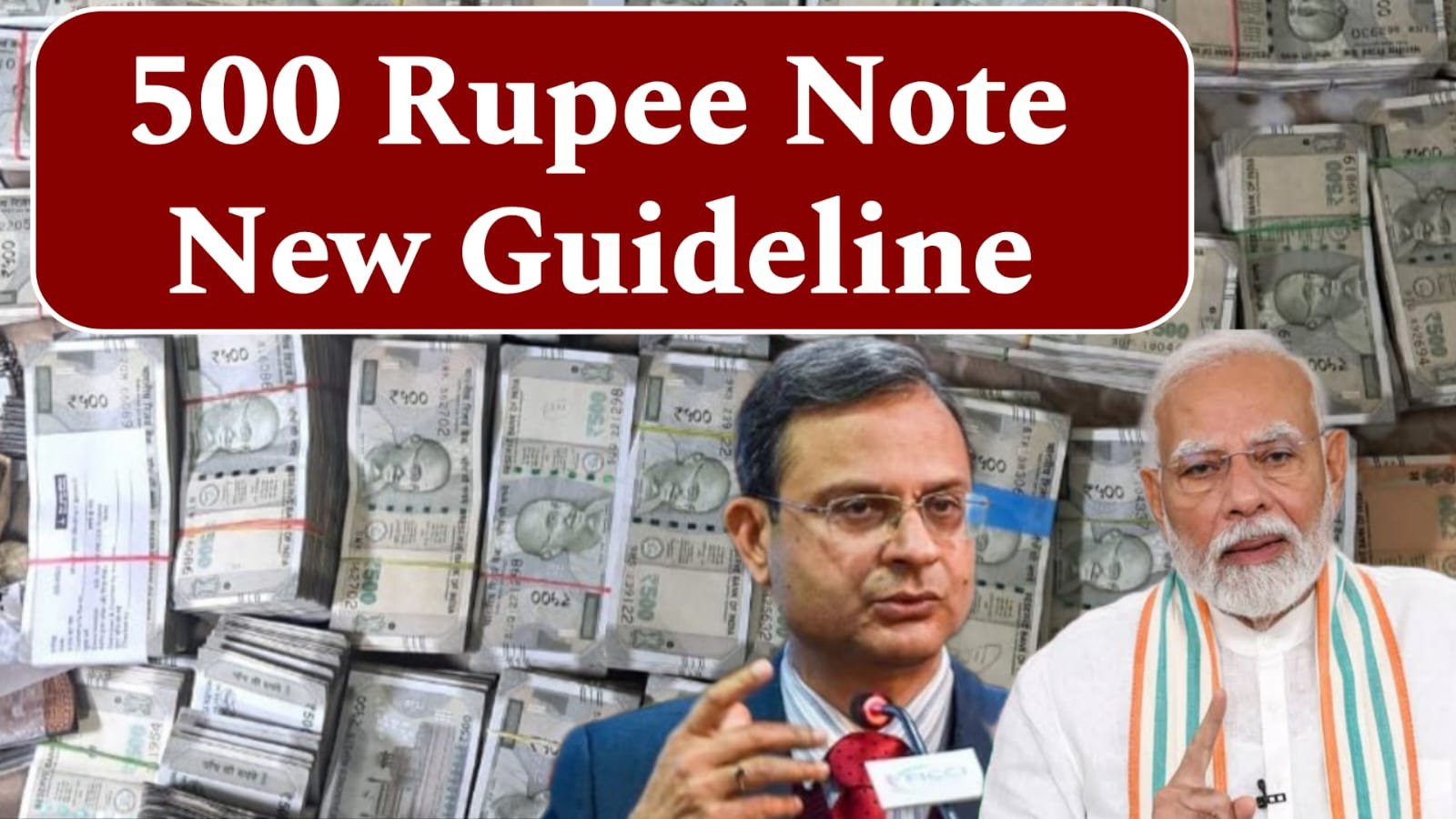500 Rupees Note : If you have ₹500 notes, then there’s an important update from the Reserve Bank of India (RBI). The central bank has recently issued new guidelines regarding ₹500 currency notes, which will directly affect common citizens, traders, and shopkeepers. Let’s understand in detail what these new rules are, why they were introduced, and what precautions you need to take.
Background : After ₹2000 Notes Were Withdrawn
After the discontinuation of ₹2000 notes across the country, many rumors and fake news started circulating about 500 Rupees notes. To clear all confusion, the RBI has officially clarified the status and authenticity of ₹500 notes and issued some important guidelines for the public.
RBI’s New Guidelines on 500 Rupees Note
The Reserve Bank of India has issued instructions regarding the handling and exchange of ₹100, ₹200, and ₹500 notes. Many people face issues when they withdraw cash from ATMs and receive torn or damaged notes. Such notes are often rejected during transactions.
Now, the RBI has made it clear that torn, dirty, or damaged notes can be easily exchanged at your nearest bank branch. In addition, the RBI has provided new details to help people identify genuine ₹500 notes and avoid counterfeit ones.
500 Rupees Note Remain Valid
First of all, it’s important to know that ₹500 notes remain completely valid. The RBI has no plans to withdraw or discontinue them. All ₹500 notes currently circulating in the market are legal tender, provided they are authentic and not counterfeit.
To help people identify fake currency, the RBI has also issued guidelines highlighting the security features present in real ₹500 notes.
Security Features of a Genuine ₹500 Note
According to the RBI, here’s how you can identify an original ₹500 note:
- The portrait of Mahatma Gandhi should be perfectly centered on the note.
- A security thread appears blue when the note is tilted under light.
- A ₹500 watermark is visible when held against the light.
- The note includes raised printing and Braille markings for visually impaired individuals.
-
Micro-lettering with the words “RBI” and “₹500” should be visible under a magnifying glass.
How to Identify Damaged or Unfit ₹500 Notes
In recent days, a lot of fake and misleading information has spread about old or damaged notes. To address this, the RBI has explained how to identify notes that are unfit for circulation.
A note is considered unfit if:
- It is torn from edge to edge or has large tears.
- It is excessively dirty, stained, or covered in mud.
- It has become worn out due to overuse.
- The print or graphics on the note have faded or changed.
-
The color of the note has faded or washed out.
Such notes can be exchanged at any bank branch, as per RBI’s clean note policy.
Important Advice for Shopkeepers and Business Owners
For those who handle cash transactions daily, such as shopkeepers, traders, and small business owners, the RBI has issued the following advice:
- Always check every ₹500 note carefully before accepting it.
- Use a note detection machine for verification whenever possible.
- Learn and remember the security features available on the official RBI website.
- Avoid accepting any suspicious or doubtful note.
-
If you suspect a counterfeit note, report it immediately to the nearest bank or police station.
Conclusion
The RBI has not banned ₹500 notes — they remain fully valid for all types of transactions. However, due to the rise in fake notes, people are urged to be more cautious and verify each note carefully.
Always rely on official information from the RBI, avoid spreading rumors, and help maintain trust and transparency in cash transactions. These new guidelines aim to protect the public, reduce counterfeit circulation, and ensure that India’s monetary system remains secure and reliable.



